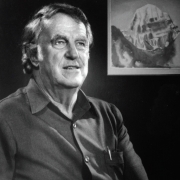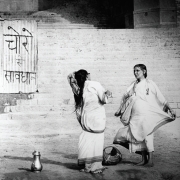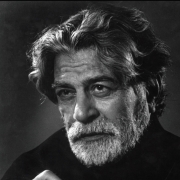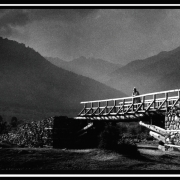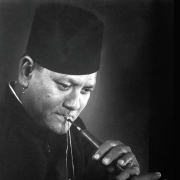
Etcetera
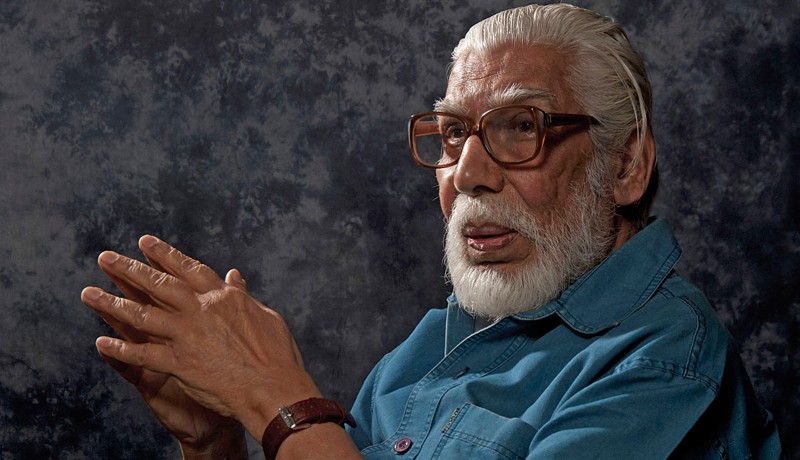
Ambica Gulati reveals a master photographer’s ‘gift’ to his fraternity and takes a snapshot of his life and work
For most of us, taking a picture means pressing a white circle on a smart phone and hoping we have captured a ‘Kodak moment’—or the most narcissistic portrait of them all, the ‘selfie’. Words like these bring no joy to O P Sharma, who has spent a lifetime behind camera lenses making photos with delicate skill and teaching youngsters how to use their minds and imagination to craft elegant images.
“If a photograph is technically poor, it is only half a photograph,” he insists. “Unless you understand each and every part of the photographic process—from pressing the shutter to producing the final print—you can’t produce a good image.”
Apart from heading the photography department at Modern School, Barakhamba Road, Delhi, for 40 years, where he groomed many budding photographers who went on to make a mark, Sharma has had many prestigious photographic projects to his name: books, advertisements, publicity material for films and other commercial assignments. He is the founder of the India International Photographic Council (IIPC) and is one of only five Indians chosen as honorary fellows by the Royal Photographic Society (RPS) in UK. He also led the crusade to recognise 19 August as World Photography Day.
Yet, in a career spanning over five decades, he has loved nothing more than teaching. His late wife Chitrangada, who was once his student and also a photographer, had once said in an interview, “I think what made him such a good teacher was that he always tried to give his students what he couldn’t get and had to struggle with.”
For Sharma, the pursuit of photography was not quite the accessible career choice as it is today. “I learnt photography from books; studied the history, works and techniques of great masters; and understood that unless you understand the camera and its accessories thoroughly you cannot use any of them,” Sharma tells us, sitting behind the teacher’s desk at Triveni Kala Sangam, a cultural, arts and education centre in Delhi, where he currently teaches.
Ironically, photography was not even his first career choice. “I used to paint and had an interest in music,” he recalls, referring to his student days at Christian College in Lucknow, where he chanced upon a photography exhibition. “I was inspired by the work of Canadian photographer Yousuf Karsh. My interest grew and, eventually, my naani presented me with a twin lens reflex German camera but she told me she could not spend any more money on this. Therefore, I used to walk from my home to the college, to save four annas to buy film and paper.”
The head of the physics department at Lucknow University taught him how to develop black-and-white film, and the lad didn’t stop shooting and developing till he mastered the dark-room techniques. Painting took a backseat and photography became his life.
“My learning came through members of clubs like the Lucknow Camera Club,” he tells us. “Photographers like P N Mehra, A L Syed and Krishna Kumar helped us young ones. On holidays, along with other photographers, I would go to Char Bagh railway station and found many interesting subjects. I captured everything on my camera—people sitting around, the mad rush to catch the trains, street-side hawkers and more.”
His move to Delhi in 1960 proved to be a good choice. Though he graduated in science, he was smitten by photography and determined to work in the field. That quest brought him to the capital. “Luckily, I connected with celebrated painter Mr Kanwal Krishna, who later became my father-in-law, and learnt from him,” he reminisces.
In 1964, Sharma mounted his first solo exhibition; he has since had 40 solo shows, in India and abroad, and had his work published in magazines of that era such as Dharmayug and Illustrated Weekly. Further, he shot advertisements for agency J Walter Thomson, shot towels for DCM, and more. “I did these commercial shoots with my wife Chitrangada. We did the publicity material for films such as Chhupa Rustom, Shalimar and Do Boond Paani. We also did portraits of Shammi Kapoor and
Dharmendra,” he recollects.
Other eminent people captured by Sharma include Faiz Ahmad Faiz, Pandit Jasraj, Ustad Bade Ghulam Ali Khan, Begum Akhtar, former prime minister Rajiv Gandhi, former president R Venkataraman and Field Marshal K M Cariappa. His work with actor Sajjan was published in a book titled Rasa Bhaava Darshan, which contained 215 black-and-white pictures. He has also won an astonishing 600 awards for his work.
He shares another golden memory from back in the day. “In 1972, I won the annual international photo contest hosted by Saturday Review magazine in America. My winning entry was titled Desert Colours, which I made in Jaisalmer, where I was shooting stills for Do Boond Pani. I was the only one they gave a return ticket to, from Newark in the US to Delhi. There I saw photography workshops being held. And I thought that we needed them in India too.” To accomplish this objective, Sharma founded the IIPC in 1983, and started holding workshops “simply for the love of spreading awareness about the art”. His son Aseem now runs IIPC, which is a 2,500-member organisation today.
Indeed, Sharma’s passion for the craft has been so all-consuming that he decided to leave a permanent mark on the global photographic community. The climax of that journey is the celebration of World Photography Day on 19 August every year.
“The idea came to me in 1988 when, over and over again, in various publications that documented the history of photography, I came across this date: 19 August 1839. It was recorded as the date on which the then French government announced the invention of the ‘Daguerreotype’ process of photography as a ‘free gift to the world’,” says the Delhi-based master lensman. “I proposed the idea to several masters and photographers around the world, about 150 of them, including the RPS and the Photographic Society of America (PSA). I quoted information I had found in several important photography-related documents, books and journals.”
Sharma set about his labour of love in 1998. “Back then, there was no Internet and email, so I wrote lots of letters to different people in many different countries. It took a long time for the replies to come in. By the beginning of 1991, everyone took a unanimous decision and we started celebrating ‘World Photography Day’ that year,” he reminisces, adding that the first to reply in the affirmative was the PSA and the last, the Japan International Photographic Federation. It was a triumphant year for Sharma and the IIPC. “We had about 250 members then and we celebrated the first World Photography Day.”
It has certainly been a long and eventful journey for Sharma, who has seen techniques change and adapted to them along the way. He has used miniature, medium and long-format cameras. He is comfortable with his Nikon and Pentax film cameras, and he sometimes uses his son’s digital camera when they go out on a shoot together. But at the age of 81, Sharma doesn’t shoot much anymore; he does, however, continue to teach theory to eager shutterbugs at Triveni Kala Sangam.
Always the teacher, Sharma’s artistic temperament leans towards being patient and reserved; but there is something he just has to get off his chest. All this reminiscing about dark rooms and the technicalities of photography has made him restless. Finally, he spits it out, muttering that iconic tag line spoken by George Eastman, founder of Kodak: “‘You press the button, we do the rest’. Since then, people have been ‘pressing the button’ without understanding anything.”
Photographs courtesy: O P Sharma Featured in Harmony — Celebrate Age Magazine August 2018
you may also like to read
-
Cracking the longevity code
Small yet impactful choices can be game-changers, writes Srirekha Pillai At 102, there’s no stopping Chandigarh-based Man Kaur, the world’s….
-
Home, not alone
While a regulatory framework is vital for senior-care facilities, the need of the hour is to develop an ecosystem to….
-
Birthday Girl
Published in a special edition to honour Japanese master storyteller Haruki Murakami’s 70th birthday, Birthday Girl (Penguin; Rs 100; 42….
-
A huge treat for music lovers
Published as the revised and updated second edition, Incomparable Sachin Dev Burman (Blue Pencil; Rs. 599; 470 pages) the authoritative….



